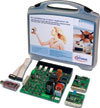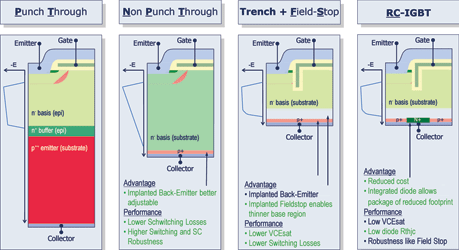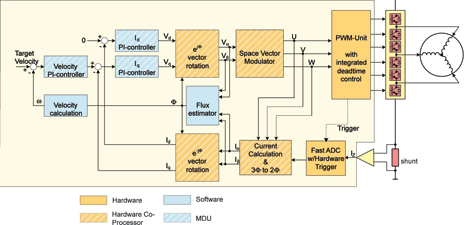
For many years, market research houses have been predicting a substantial increase in the sales of high-efficiency home appliances.
However, due to high costs, manufacturers resorted to selling these appliances as high-end, low-volume products, so growth has been well below forecasts. The latest market studies continue to predict rapid market growth by indicating, for example, that the variable speed drives market in major home appliances is set to double over the next five years, but this time things have changed. Now there is more confidence in the accuracy of these latest predictions due to a series of factors.
Government legislation and China’s government subsidy programme to stimulate the Chinese economy during the 2009 downturn are two reasons why major home appliance manufacturers are more actively implementing higher efficiency standards. Manufacturers are also using this as a chance to develop products with unique features to differentiate themselves from the competition. Without doubt, intelligent power modules (IPM) will enjoy market leadership in this segment, but there is a trend evident that discrete solutions will win more of the market share. Due to cost pressure, OEMs and design houses are looking more closely at implementing discrete solutions. This has recently been seen via a significant increase in requests for technical support to help with optimising discrete solution designs.
Semiconductor solutions for home appliances
Up until 2009, IPMs used for driving inverters were the device of choice due to ease of design-in and assembly. However, due to delivery issues and cost saving programmes, home appliance manufacturers began adopting multiple-sourcing strategies, which allows for flexibility in selecting different semiconductor suppliers. The discrete IGBTs enable both cost saving potential and second sourcing, with slightly higher design efforts.
With a discrete solution, designers are handed an extra degree of freedom over an IPM solution, so microcontrollers, gate drivers and power semiconductors can be selected and laid out to deliver optimum thermal and electrical performance.
To help designers achieve the best from their designs with little effort, Infineon Technologies has developed an air conditioning inverter kit. On a single PCB, a compressor up to 1,2 kW and a fan up to 200 W can be simultaneously controlled. The board can run on either 110 V or 230 V mains voltage. The kit contains two microcontroller boards plus USB interface, two inverter stages (1,2 kW and 200 W) and PFC stage. An 8-bit controller (XC-878) is capable of controlling PFC and a single motor, whilst a 16-bit controller (XE-164) is included for controlling two motors and the PFC. Figure 1 shows the kit plus contents.

A B6 full-bridge configuration is used in the air-conditioning inverter kit. The kit uses Infineon’s most recent thin-wafer TRENCHSTOP and field-stop IGBT technology called RC-Drives (seen in Figure 2(d)). The technology replaces conventional non-punch through and punch-through IGBTs due to low conduction and switching losses, excellent EMI behaviour and cost effectiveness.

IGBTs used in inverter systems require a commutation-proof anti-parallel diode. Since the IGBT does not have an intrinsic body diode, a two-chip solution in a single package is needed (duo pack). Infineon’s new RC-Drives technology has the diode monolithically integrated into the IGBT structure itself as can be seen in Figure 2(d). Although integrated into the IGBT, the diode is fully commutation proof and offers low VF and Qrr.
With the integration of the diode, the RC-Drives IGBT enables up to a 40% shrink compared to the common duo-pack solution. The shrink results in an increase of power density, which in turn allows for the use of smaller packages for the same current class. Therefore, a TO-220 or D²PAK can be replaced with the smaller IPAK (TO-251) or DPAK (TO-252) packages, allowing for a smaller footprint on the PCB and resulting in cost- and space-saving in current classes from 4 to 15 A.
Higher frequencies for customer comfort
The typical frequency range of inverters used in home appliances is between 5 kHz and 16 kHz, depending on which modulation technique is used. For the air conditioner kit, a PWM modulation technique is used and the frequency can be adjusted according to the designers’ requirements. Caution must be exercised when designing inverters to switch between 10 kHz and 16 kHz, as this falls in the human audible range and the noise becomes annoying for consumers. As a result, we see compressors operating below 8 kHz and fans operating above 18 kHz.
Thanks to Infineon’s thin-wafer IGBT technology, the RC-Drives family is an ideal fit into the home appliance market, since it offers very low conduction losses and switching losses with a very soft turn-on/-off behaviour to lower the EMI.
For appliances switching between 8 kHz and 25 kHz, a new RC-Drives Fast (RC-DF) series is available in 3 A and 4 A in DPAK (TO-252). The new products allow for designers to increase operating frequencies above the human audible range, resulting in quieter operation for the end customer. The increase in operating frequency allows for advanced control algorithms, like field oriented control (FOC), to be implemented. The benefit of operating at higher switching frequencies means the passive component size can be reduced. The air conditioning inverter kit allows designers to use the XE-164 microcontroller to experiment and see the efficiency benefits when using FOC.
A PFC stage is also included on the kit and uses the latest High Speed 3 IGBT technology in the boost switch. The IGBT offers an economically attractive replacement for planar MOSFETs, whilst the boost diode is the latest Infineon ThinQ! SiC diode. Designed to operate at 67 kHz, in this combination, efficiencies of above 97% can be achieved. The benefit of the higher switching frequencies is reduction in the size of the passive components.
Optimised control algorithms
For established open-loop control of synchronous machines, trapezoidal or block commutation with Hall elements or back EMF sensing causes noise, especially at low speed, and limits the maximum speed. FOC leads to higher overall system efficiency due to sinusoidal currents with a low torque ripple and a wide speed range (Figure 3). For a quick start, a full tool-chain is included in the evaluation kit. The field-oriented control is implemented for both inverters using a single-shunt based feedback loop in the air conditioning inverter kit.

For more information contact EBV Electrolink, +27 (0)21 402 1940, [email protected], www.ebv.com, Electrocomp, +27 (0)11 458 9000, [email protected], www.electrocomp.co.za
| Tel: | +27 11 236 1900 |
| Email: | [email protected] |
| www: | www.ebv.com |
| Articles: | More information and articles about EBV Electrolink |
| Tel: | +27 11 458 9000 |
| Email: | [email protected] |
| www: | www.electrocomp.co.za |
| Articles: | More information and articles about Electrocomp |

© Technews Publishing (Pty) Ltd | All Rights Reserved